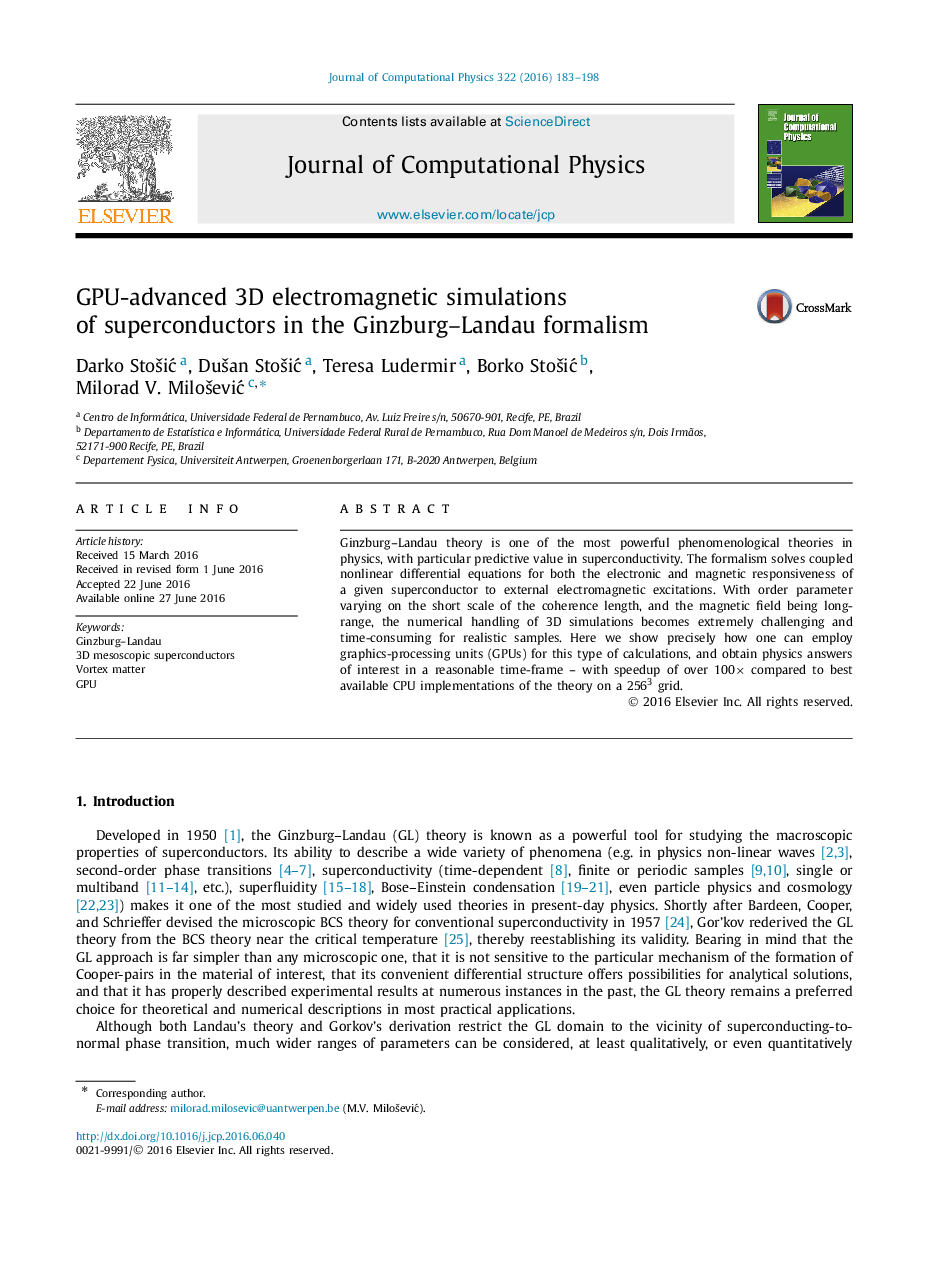| Article ID | Journal | Published Year | Pages | File Type |
|---|---|---|---|---|
| 6929549 | Journal of Computational Physics | 2016 | 16 Pages |
Abstract
Ginzburg-Landau theory is one of the most powerful phenomenological theories in physics, with particular predictive value in superconductivity. The formalism solves coupled nonlinear differential equations for both the electronic and magnetic responsiveness of a given superconductor to external electromagnetic excitations. With order parameter varying on the short scale of the coherence length, and the magnetic field being long-range, the numerical handling of 3D simulations becomes extremely challenging and time-consuming for realistic samples. Here we show precisely how one can employ graphics-processing units (GPUs) for this type of calculations, and obtain physics answers of interest in a reasonable time-frame - with speedup of over 100Ã compared to best available CPU implementations of the theory on a 2563 grid.
Keywords
Related Topics
Physical Sciences and Engineering
Computer Science
Computer Science Applications
Authors
Darko StoÅ¡iÄ, DuÅ¡an StoÅ¡iÄ, Teresa Ludermir, Borko StoÅ¡iÄ, Milorad V. MiloÅ¡eviÄ,
